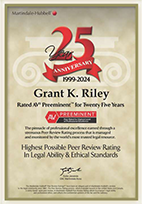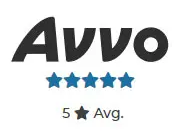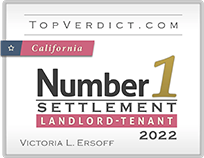Winter Heating Season in California: Carbon Monoxide, Space Heaters, and Your Rights
When the nights turn cold in California, many renters rely on gas wall heaters, older furnaces, and portable space heaters to stay warm. Winter also brings a quieter threat. Carbon monoxide is colorless and odorless. It can build up indoors in minutes and cause headaches, confusion, unconsciousness, and death. That is why California law requires carbon monoxide detectors in most homes, including rentals, and why landlords must keep heating systems safe and operable.
This guide explains how carbon monoxide exposures happen in rentals, what the law requires, how to document problems, and the steps to take if your landlord does not respond.
What Carbon Monoxide Is and Why It Rises in Winter
Carbon monoxide (CO) forms when fuel does not burn completely. Common indoor sources include:
- Gas wall or floor heaters
- Furnaces, water heaters, and stoves
- Fireplaces and wood stoves
- Attached garages where cars idle
During winter, windows stay closed, and heaters run longer. Poor ventilation, deferred maintenance, or blocked vents can let CO accumulate. Because you cannot see or smell it, the first warning is often a detector alarm or symptoms like dizziness, nausea, or sudden fatigue.
Related post: Deaths on the Rise from Carbon Monoxide in the U.S.
The Law in California: Detectors and Maintenance
California Health and Safety Code sections 17926 and 17926.1 require owners to install approved carbon monoxide devices in dwelling units that have any fossil-fuel burning heater or appliance, a fireplace, or an attached garage. Owners of rental units must maintain those devices. Tenants must promptly notify the owner if a device is missing, defective, or alarming.
What does that mean for renters:
- Detectors must be present and working. They belong in appropriate locations as approved by the State Fire Marshal.
- Landlords are responsible for installation and upkeep of required CO devices and safe heating systems.
- Tenants must report problems with alarms or heating equipment so owners can repair them.
Signs Your Home May Be at Risk
Call maintenance and get fresh air immediately if you notice:
- A beeping CO alarm or an alarm labeled “CO”
- Yellow or flickering burner flames instead of steady blue
- Sooty stains near heaters, fireplaces, or vents
- Headaches, dizziness, confusion, or nausea that improve outdoors
If anyone has symptoms, call 911. Do not re-enter until first responders say it is safe.
Related post: Was I Poisoned by Carbon Monoxide in my Rental Property?
How to Document Heating and CO Problems
Good documentation protects your health and your legal rights.
- Write a dated repair request describing the problem.
- Photograph or video the device, its location, and any visible damage.
- Record alarm events with date and time.
- Track symptoms for all household members, including when they appear and resolve.
- Keep receipts for hotel stays or medical visits linked to the incident.
If your landlord delays or refuses to act, local code enforcement can inspect and issue orders. New enforcement measures in California also encourage broader inspections of multi-unit buildings when one unit shows substandard conditions, which can include hazards like mold or combustion safety issues.
Concerned About Your Heating System or Missing CO Detectors?
Don't wait for a crisis. If your landlord has ignored repair requests or failed to install required carbon monoxide detectors, you have legal options. Riley | Ersoff LLP has recovered over $170 million for California tenants, including an $18 million verdict for carbon monoxide poisoning.
Get a free case review or call (888) 658-9695
What Landlords Must Do
Owners must:
- Install approved CO detectors where required and keep them operational.
- Maintain safe heating equipment, chimneys, and vents.
- Respond promptly to written repair requests.
- Follow building and fire codes and any city or county habitability standards.
Failure to meet these obligations may violate state law and local habitability codes. Riley | Ersoff LLP frequently educates renters on these duties across seasonal safety topics like rainy-season mold and pest infestations.
Frequently Asked Questions
Do all rentals need CO detectors?
If a home has any fuel-burning heater or appliance, a fireplace, or an attached garage, the owner must install approved devices. All multi-unit and single-family dwellings that meet these triggers are covered.
Where should detectors go?
Follow manufacturer instructions and local code guidance. The Los Angeles Housing Department notes devices approved by the State Fire Marshal are required in each dwelling unit with qualifying fuel sources. At a minimum, place them near sleeping areas and on each level.
My alarm beeps, but there is no smell. Is it a false alarm?
Carbon monoxide has no smell. Treat every alarm as real. Get into the fresh air and call 911.
Can I be evicted for calling code enforcement?
California law prohibits retaliation for good-faith complaints about habitability. Keep all communications professional and in writing.
What if my landlord refuses to install detectors or fix the heater?
Document your requests, contact code enforcement, and consider speaking with a tenant-rights attorney. If anyone was harmed, prompt legal advice is critical.
Related post: Do Landlords Have to Provide Carbon Monoxide Alarms in CA?
Why This Matters
Carbon monoxide incidents are preventable when owners follow the law and maintain safe heating systems. Riley | Ersoff LLP’s public updates often highlight patterns that increase risk, such as seasonal weather that traps moisture and fuels mold growth or winter conditions that push older heaters harder. The same documentation habits that help with mold claims also help with combustion safety issues.
Steps You Can Take This Week
- Test your CO alarm and replace batteries if needed.
- Confirm detectors are present near bedrooms and on each floor.
- Visually check heater vents and report anything loose, blocked, or damaged.
- Send a short, dated email to your landlord confirming that alarms are present and working, or requesting installation and inspection.
When to Get Legal Help
Seek legal advice if:
- Your landlord ignores written requests to install detectors or repair heaters.
- A family member who experienced CO symptoms and medical care was required.
- Code enforcement found violations that remain unresolved.
- You were told to keep quiet or sign something that limits your rights after an incident.
Related post: Average Carbon Monoxide Poisoning Lawsuit Settlement
Riley | Ersoff LLP regularly publishes tenant-focused guides and case updates to help families understand their rights in unsafe housing situations, including carbon monoxide poisoning, lead hazards, mold, and pest infestations. Our content aims to educate first, then encourage action when required.
Protect Your Family This Winter
Winter should not come with hidden hazards. Know what the law requires, document issues early, and insist on timely repairs. If your landlord refuses to install detectors, ignores heating repairs, or creates unsafe conditions, you don’t have to face this alone.
Riley | Ersoff LLP holds California landlords accountable for carbon monoxide poisoning, slum housing, and tenant rights violations. We’ve secured more than $170 million for families across the state, including record-setting verdicts and settlements.
Contact us for a confidential case review if you have concerns about unsafe heating, missing CO detectors, or injuries from exposure. Getting answers now can prevent a crisis later.

.2511061439013.png)
















